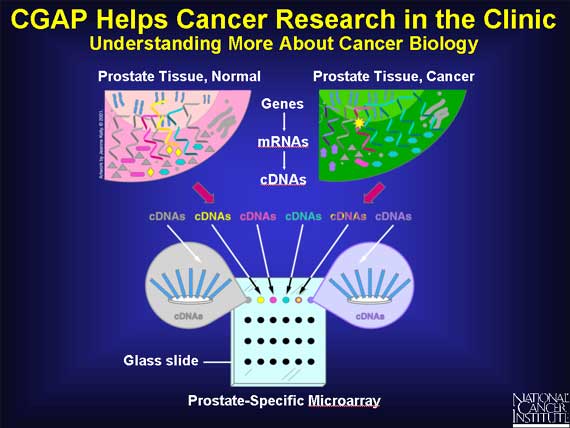|
Researchers use cDNAs to build microarrays.
A microarray consists of a glass slide onto which a large variety of cDNAs are placed in separate spots. Each spot contains many copies of the same cDNA molecules.
Microarrays enable scientists to find which genes are switched on or off in a tissue. To make a prostate-specific microarray, for example, researchers select specific cDNAs from genes that are switched on in prostate tissue of all types: normal, precancerous, or cancerous.
Here is one simplified example in prostate tissue of how a normal cell might differ from a cancerous one.

< Previous | Index | Next Slide > |